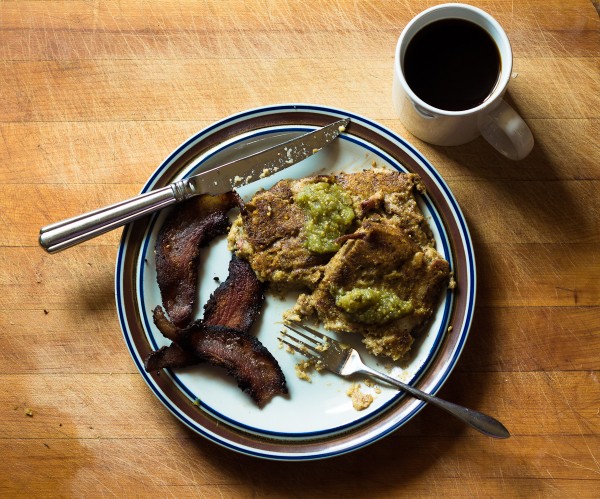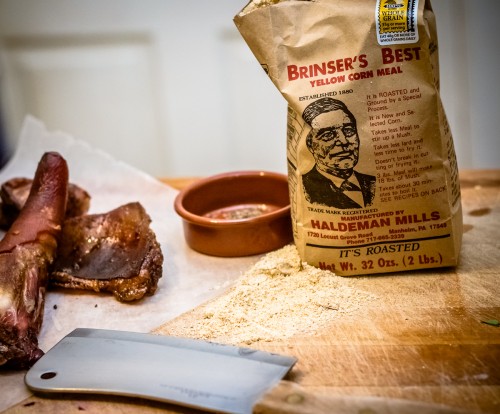-

Erin Donahue -

Christina Barkanic -

Brittany Trott -

Emily Wiley -

Jessica Reilley -

Chris Raines -

Will Nichols -

Emily Reddy -

Michele Marchetti -

Michele Frank -

James Gherardi -

Kit Henshaw -

Christina and Erin -

Kim Tait -

Erin McKinney -

Steve Spanelli -

Sam Komlenic -

Katherine Taylor Grofic -

James Eisenstein -

Jamie Oberdick -

Anna Lombardo -

LacCreta Holland -

Tony Ricci -

Local Food Journey -

Laura Young -

Kristin Camplese -

Harrison's Fresh + Local -

Danielle Matalonis -

Kristine A. -

Linda Weaver -

Naomi Elle Schwartz -

Dana Stuchul -

Cara McShane -

Brittany Smith -

Jessica Illuzzi - Frosty
-

Jessica Paholsky -

James Sechrengost -

Brad Yeckley -

Maya Althouse -

Jordan Reabold -

Kim Chase -

Maria Bryant - Alexandrea Scott
How to make your own scrapple
Posted by Jamie Oberdick on 06/18, 2013 at 10:15 AM

Editor’s Note: Nick Benard of Bellefonte is a new writer with Local Food Journey. Nick has a local food blog called the Culinary Pen, and is interested in home cheese making with local raw milk, curing meat from local farms, gardening, and home butchering. With this post, he talks about his love of a real Pennsylvania food, scrapple, and offers a recipe to make your own.
I love scrapple. Not just for the savory taste, but also for what it represents: a need to use up every part of an animal and stretch the meat as far as possible. For the uninitiated, scrapple is a mixture of cereal grains cooked in broth with pork meat. The grains can vary, depending on the region. The Philadelphia region is famous for buckwheat scrapple, oats are preferred in Ohio, and rice is traditional in the Carolinas. For me, I prefer the classic Pennsylvania Dutch use of dried corn, particularly Brisner’s Best, which is traditionally dried, roasted corn milled in Pennsylvania.
Although many people think scrapple is a way to use up pork offal, it actually began as a way to save the most basic ingredient from butchering a pig: the pork stock. Made of bones, this stock was used by butchers to poach sausages and hams. Afterwards, the intensely-flavored liquid was full of valuable nutrients and calories. To save this broth, it was thickened with cereal grains, then poured into pans and cooled. It could then be covered in a layer of fat to preserve it, like pate or rillettes, and eaten later. The original German name of scrapple, PanhaskrÖppel, with “krÖp†meaning “slice,†was later truncated into “scrapple†in America.

Ingredients for scrapple
You can buy scrapple in many stores, but it’s surprising easy to make your own. I usually make my scrapple after a pig roast. Just like the scrapple makers of old, I don’t like to see the pig’s head go to waste after a whole hog roast. Thankfully, I never have much competition when asking for it. An added bonus is that the smoky head gives the scrapple a wonderful bacon-like flavor.
Now, when I make scrapple from a whole hog’s head, it makes enough to fill 3-4 loaf tins. I share these among my family, but if you’re looking to make your own scrapple, try the recipe below, which is for a much more manageable portion. You don’t need to use a head, you can use leftover pork shoulder, smoked hocks, or a mix of several leftover cuts. After deciding on your meat, the rest is very simple. Think of making scrapple as making polenta. Mix cornmeal into a savory broth, allow it to thicken, then add in the chopped pork meat. Many companies finely mince their pork, but I prefer larger chunks for a more rustic look. Then pour into a greased loaf pan and refrigerate overnight.
The next morning, put the coffee on to brew and grease up a heavy skillet. Cut the scrapple into slices and sear over medium heat until each side is crispy and brown. Some prefer to serve their scrapple with maple syrup, while others like to cut the richness of the scrapple with a sharp green tomato or apple relish. And if you’re looking for a bit of after-breakfast reading on scrapple and its wide-ranging regional variations, I heartily suggest tracking down a copy of William Woys Weaver’s Country Scrapple: An American Tradition.
Recipe

Small Batch of Scrapple
2-3 lbs pork trimmings (use leftover smoked pork from a BBQ, or you can use smoked ham hocks, neck bones, or trotters)
1 quart water or vegetable stock
2 cups cornmeal (check your cornmeal’s bag for cooking instructions – some brands recommend doing 2.5 cups per 4 cups liquid)
½ tsp dried sage
½ tsp white pepper
¼ tsp thyme
¼ tsp mace
Salt to taste (you may need to adjust depending if the pork meat was already salted)
Instructions:
1.) Simmer pork in water or broth for 1-2 hours, depending on the thickness of the pieces. They should be soft and tender by the time they’re done. I used a number of thick, boney pieces of pork in the above photos (pork shoulder, tails, and skin), which took a full 2 hours.
2.) Remove pork from broth. Bring broth to a boil and add cornmeal. Add the cornmeal in a slow, steady stream while whisking continually to prevent lumps. Add spices, turn heat to low, and cook until cornmeal has a thick, pudding-like texture, about 30 minutes.
3.) While cornmeal is cooking, separate the pork meat and skin from the bones. Chop the meat and skin as thin or thick as you like. Also, give the cornmeal a good stir from time to time to keep it from sticking to the bottom.
4.) Once the cornmeal has thickened into a dense pudding, taste it for salt and adjust if necessary. Then add the pork, stirring to evenly distribute it through the cornmeal.
5.) Pour into a greased loaf tin, cover with plastic wrap, and refrigerate overnight.
6.) The next morning, grease a cast-iron or other heavy skillet. You can fry a bit of bacon as a side, which will get your skillet nicely greased.
7.) Turn the scrapple out of the pan onto a cutting board and slice like a loaf of bread. Once the skillet is hot, add a few slices of scrapple and turn heat to medium. Cook for 6-8 minutes per side, until brown and crispy. Don’t cook over too high of a heat, otherwise the surface of the scrapple will burn before the inside is fully warmed through. The slices should lift easily from the pan. Otherwise, give them a few more minutes to get a nice crust.
8.) Serve with maple syrup, molasses, a spicy relish, chutney, or hot sauce.
![]() Author: Jamie Oberdick
Author: Jamie Oberdick
Bio: Editor, Local Food Journey | Passionate about supporting local food in Central PA
- Our Local Food Journey comes to an end
- Winter isn’t a quiet time at the farm
- Get the taste of garden season right now by growing herbs indoors
- All you need to know about PASA’s Farming for the Future conference









NO COMMENTS